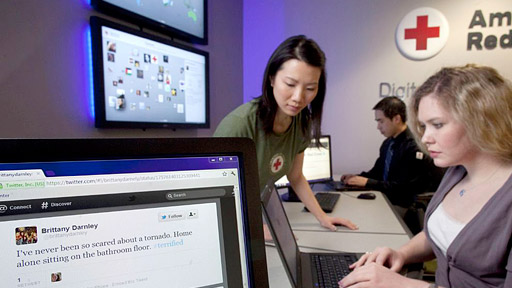anewdomain.net — You probably know how social media helps in emergency situations. Especially during and after disasters like Hurricane Sandy, Hurricane Isaac and the Connecticut school shootings.
The #SMEM community is constantly abuzz on the values and challenges surrounding the use of social media by organizations to pass important emergency related information during a disaster. For the sake of this discussion, lets focus on the role of the PIO in keeping people informed through social media.
The PIO’s primary job is to act as the “official voice” of an organization. In this case, we’ll assume the PIO to be a part of a governmental function. This person and his or her team should be the official source of information during an emergency. However, in today’s technology laden landscape, the PIOs in many jurisdictions have either entirely ignored the social media space, misused it, or are just starting to grasp it. To this end, I encourage PIOs to consider the following:
1. Be the Official Source
This seems obvious, but I feel a lot of jurisdictions have let this basic function of the PIO go by the way side, simply because a new technology is at play. Think of it this way: The PIO’s job has not changed in the new social media landscape, it has simply been expanded. PIOs should not be doing anything more, less, or different than before. Social media is just another tool that the communications professional (the PIO) can use to reach his or her target audience. The PIO should work social media into the communciations plan, as appropriate, and work with social media outlets to obtain “verified” or “validated” accounts where possible. This allows the PIO’s presence on the internet to be a confirmed, trusted, and official source of information.
2. Open the Two-Way Street
For the longest time the job of a PIO was to push information. With today’s technology, PIOs can act as a two-way conduit for information to and from the public. Opening up this two-way dialog during an emergency allows PIOs to get the important, validated information out, but also take in new information from the public. This allows response organizations to better plan for operations, validate issues and reissue confirmed statements to the public writ large.
Remember, this is a huge problem with social media: After a disaster many people will begin self-reporting information, creating a cross-section of accurate, embellished and completely false information that people may assume is accurate unless someone steps in as the official, validating source. This is a function best owned by the PIO shop and is honestly the best place for growth right now in the SMEM world in my opinion.
3. Be Honest
One item that used to be difficult for some PIO organizations was the ability to be 100% open and transparent during events. This is an older model of only releasing 100% confirmed information while remaining silent on unresolved/unconfirmed issues. Social media has made it more possible for PIOs to quickly obtain and widely disseminate information. (As mentioned above, the two-lane street is open for business and can some times be a super highway.)
One of the greatest benefits of using social media is the ability to interact and be part of the situation. PIOs are often seen as the person on TV that just pushes random information while being separated from the event. Now, PIOs can be in the mix and engage their public directly. One of the best ways to obtain trust and authority is to be honest in your transactions. I think you will find that many people will provide more information and be more willing to follow instructions and guidance if they feel like they are directly involved.
4. Recruit, Standardize, and Innovate
Let’s face it, PIOs have it pretty rough sometimes. Much like their host organizations, they are generally drastically understaffed when things start happening. This is not lost on many of us — in fact, there are volunteer organizations out there that exist purely to fill the void during disasters, however it’s time we start looking at the problem in front of us and begin working on filling the gaps.
Social media use in disasters results in a flood of information at once. Many shops down’t have the personnel to sort through the noise and find the information that is most important. To resolve this problem, I am becoming a heavy supporter in the age of the “digital first responder.” A phrase that the Red Cross seems to get most credit for coining, it basically means volunteers that will help become the PIO’s filter during an emergency. This cadre of volunteers can be brought together by existing Community Emergency Response Teams (CERTs), the Red Cross or by a specific volunteer group for this function, such as Ham Radio operators: The Emergency Communications Catalyst.
Train these individuals in the processes of you organization, basic emergency management, and put them to work in front of a computer helping to organize information as it comes in. This frees up the PIO, but also ensures that the public is heard and that answers are provided. Volunteers help the two-way street from becoming one-way and a potential hazard to your communications. This is the greatest area in which organizations can innovate and help to standardize their social media engagement during emergencies.













